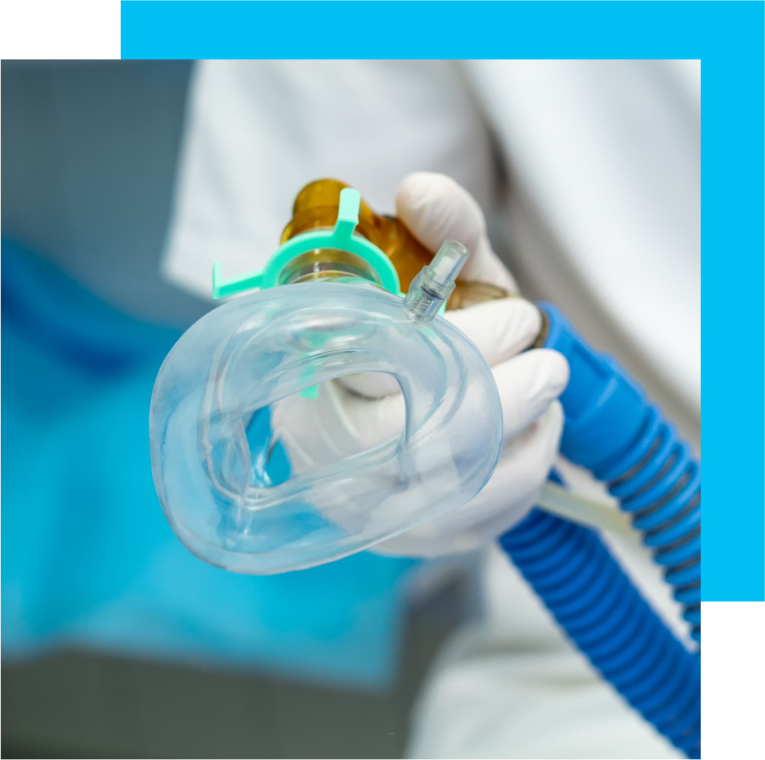The field of anaesthesiology has evolved by leaps and bounds. The latest anaesthesiology practices deliver a total and completely pain-free intra-operative experience in the safest way for patients worldwide.
The field of anaesthesiology has evolved by leaps and bounds. The latest anaesthesiology practices deliver a total and completely pain-free intra-operative experience in the safest way for patients worldwide.

Several factors, however, affect the type of anaesthesia that will deliver the safest, pain-free intraoperative experience:
Sri Balaji Hospital is an advanced surgical centre that practices advanced anaesthetic modalities to ensure accuracy and safety during surgical procedures. Our experienced anaesthesiologists personalise the type of anaesthesia and dosage for each patient. They consider the patient’s age, body surface area, and existing medical conditions to ensure precise dosage delivery and minimum risks during the procedure.

Local anaesthesia involves injecting medication, often Lignocaine, into the skin surrounding the area where the procedure will be performed. It causes numbness in and around the injection site, thereby relieving you of any pain during the procedure. Local anaesthesia works well for minor procedures involving a small surface area on the body.
It is also beneficial in terms of:
At Sri Balaji Hospital, Chennai, we perform the following procedures under local anaesthesia:
Regional anaesthesia involves the administration of anaesthetic agents on a larger surface area of the body but does not require the entire body to be in a state of anaesthesia.
This approach benefits surgical procedures involving larger body regions, such as the abdomen, pelvis, and lower limbs.
By selectively targeting the nerves in the surgical region, regional anaesthesia can provide effective pain relief and reduce the need for general anaesthesia, which has a greater risk of complications. The common medications for regional anaesthesia, among others, are:
Regional anaesthesia involves using a specific numbing agent given as a targeted dose to bigger nerves that feed an entire area in the body — like the knee or shoulder. When the medication is injected around those nerves, it helps spread numbness in that part of the body.
Depending on the specific medication used, the numbness can last anywhere from 4 hours to 24 hours. This allows you to feel less pain both during and after the surgery.
At Sri Balaji, we rely on regional anaesthesia for several procedures. Some of the common use cases include:
Spinal and epidural anaesthesia are the most common types of regional anaesthesia. Anaesthetists use this modality to temporarily numb BOTH your lower limbs rather than restricting the medication to one limb or a single area such as one shoulder or knee.
The anaesthetic is administered near the spinal cord to induce numbness from the waist down. Your doctor decides on spinal and epidural anaesthesia and tailors the duration of the medication effect after considering factors such as:
The Department of Anaesthesiology at Sri Balaji Hospital employs spinal/ or epidural anaesthesia for:
Sedation is a type of anaesthesia using IV (intravenous) medications to ease pain, anxiety, or both. There are numerous sedative injections available 0n the market today. Depending on the patient's safety and surgical needs, the anesthesiologist will select the appropriate type of sedative injection.
At Sri Balaji Hospital, the sedation procedure is tailored according to the patient’s health condition and the procedure. We follow various sedation methods such as:
Conscious sedation: The lightest level of sedation is commonly used for patients suffering from anxiety. This sedation helps the patient stay relaxed and slightly drowsy while remaining awake.
Twilight anaesthesia: This is a slightly deeper form of sedation. Most people are awake enough to interact with the healthcare team during the procedure.
Deep sedation: This level of sedation is strong enough to put to sleep for a while. This method often requires close monitoring and oxygen administration since the medication can relax or slow your breathing.
Some of the procedures where we commonly employ I.V sedation include (but are not limited to):
General anaesthesia is probably what comes to mind when you think of surgery. It is the deepest form of anaesthesia, which puts you in a state of controlled unconsciousness. General anaesthesia involves administering IV and inhaled medications to keep you unconscious and pain-free during the procedure.
Depending on their unconscious state, patients under general anaesthesia receive respiratory support to facilitate normal breathing and to ensure their safety. The respiratory support is withdrawn immediately after the procedure is completed, the effects of anaesthesia have worn off, and the patient is conscious again.
Some of the common procedures performed under general anaesthesia include:
Major surgeries involving parts of the body that cannot be reached via nerve injections of nerve blocks, such as:
